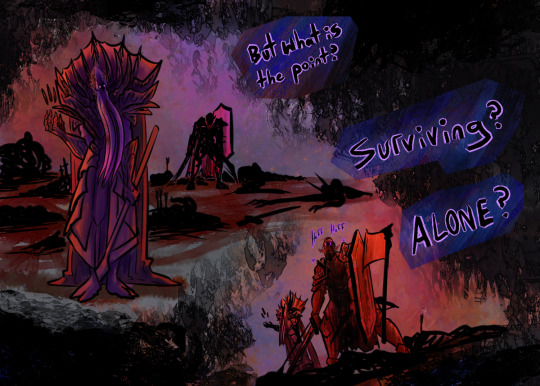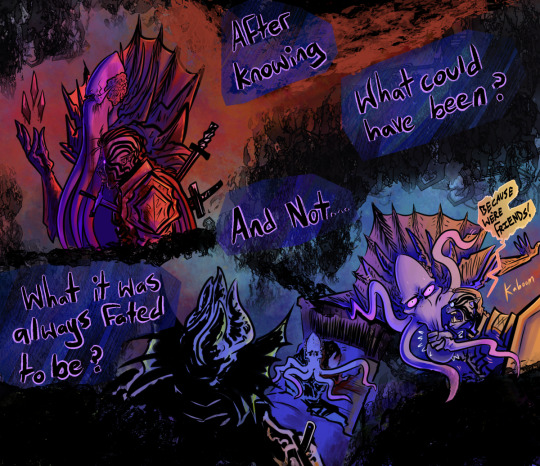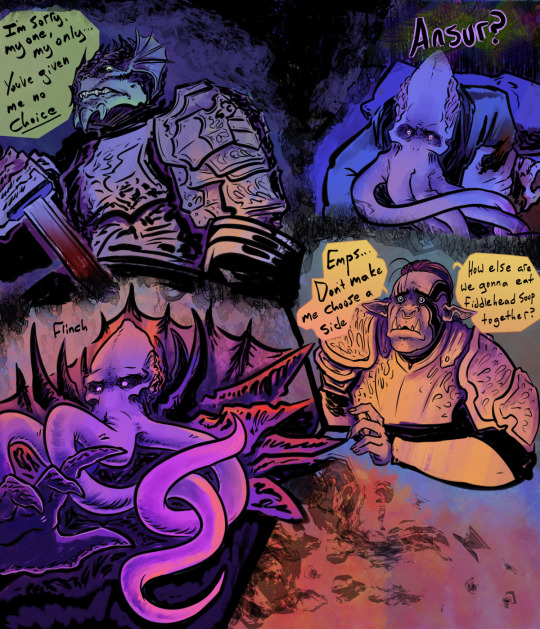#Classical physics news
Text
AI Algorithm Improves Predictive Models of Complex Dynamical Systems - Technology Org
New Post has been published on https://thedigitalinsider.com/ai-algorithm-improves-predictive-models-of-complex-dynamical-systems-technology-org/
AI Algorithm Improves Predictive Models of Complex Dynamical Systems - Technology Org
Researchers at the University of Toronto have made a significant step towards enabling reliable predictions of complex dynamical systems when there are many uncertainties in the available data or missing information.
Artificial intelligence – artistic concept. Image credit: geralt via Pixabay, free license
In a recent paper published in Nature, Prasanth B. Nair, a professor at the U of T Institute of Aerospace Studies (UTIAS) in the Faculty of Applied Science & Engineering, and UTIAS PhD candidate Kevin Course introduced a new machine learning algorithm that surmounts the real-world challenge of imperfect knowledge about system dynamics.
The computer-based mathematical modelling approach is used for problem solving and better decision making in complex systems, where many components interact with each other.
The researchers say the work could have numerous applications ranging from predicting the performance of aircraft engines to forecasting changes in global climate or the spread of viruses.
From left to right: Professor Prasanth Nair and PhD student Kevin Course are the authors of a new paper in Nature that introduces a new machine learning algorithm that addresses the challenge of imperfect knowledge about system dynamics. Image credit: University of Toronto
“For the first time, we are able to apply state estimation to problems where we don’t know the governing equations, or the governing equations have a lot of missing terms,” says Course, who is the paper’s first author.
“In contrast to standard techniques, which usually require a state estimate to infer the governing equations and vice-versa, our method learns the missing terms in the mathematical model and a state estimate simultaneously.”
State estimation, also known as data assimilation, refers to the process of combining observational data with computer models to estimate the current state of a system. Traditionally, it requires strong assumptions about the type of uncertainties that exist in a mathematical model.
“For example, let’s say you have constructed a computer model that predicts the weather and at the same time, you have access to real-time data from weather stations providing actual temperature readings,” says Nair. “Due to the model’s inherent limitations and simplifications – which is often unavoidable when dealing with complex real-world systems – the model predictions may not match the actual observed temperature you are seeing.
“State estimation combines the model’s prediction with the actual observations to provide a corrected or better-calibrated estimate of the current temperature. It effectively assimilates the data into the model to correct its state.”
However, it has been previously difficult to estimate the underlying state of complex dynamical systems in situations where the governing equations are completely or partially unknown. The new algorithm provides a rigorous statistical framework to address this long-standing problem.
“This problem is akin to deciphering the ‘laws’ that a system obeys without having explicit knowledge about them,” says Nair, whose research group is developing algorithms for mathematical modelling of systems and phenomena that are encountered in various areas of engineering and science.
A byproduct of Course and Nair’s algorithm is that it also helps to characterize missing terms or even the entirety of the governing equations, which determine how the values of unknown variables change when one or more of the known variables change.
The main innovation underpinning the work is a reparametrization trick for stochastic variational inference with Markov Gaussian processes that enables an approximate Bayesian approach to solve such problems. This new development allows researchers to deduce the equations that govern the dynamics of complex systems and arrive at a state estimate using indirect and “noisy” measurements.
“Our approach is computationally attractive since it leverages stochastic – that is randomly determined – approximations that can be efficiently computed in parallel and, in addition, it does not rely on computationally expensive forward solvers in training,” says Course.
While Course and Nair approached their research from a theoretical viewpoint, they were able to demonstrate practical impact by applying their algorithm to problems ranging from modelling fluid flow to predicting the motion of black holes.
“Our work is relevant to several branches of sciences, engineering and finance as researchers from these fields often interact with systems where first-principles models are difficult to construct or existing models are insufficient to explain system behaviour,” says Nair.
“We believe this work will open the door for practitioners in these fields to better intuit the systems they study,” adds Course. “Even in situations where high-fidelity mathematical models are available, this work can be used for probabilistic model calibration and to discover missing physics in existing models.
“We have also been able to successfully use our approach to efficiently train neural stochastic differential equations, which is a type of machine learning model that has shown promising performance for time-series datasets.”
While the paper primarily addresses challenges in state estimation and governing equation discovery, the researchers say it provides a general groundwork for robust data-driven techniques in computational science and engineering.
“As an example, our research group is currently using this framework to construct probabilistic reduced-order models of complex systems. We hope to expedite decision-making processes integral to the optimal design, operation and control of real-world systems,” says Nair.
“Additionally, we are also studying how the inference methods stemming from our research may offer deeper statistical insights into stochastic differential equation-based generative models that are now widely used in many artificial intelligence applications.”
Source: University of Toronto
You can offer your link to a page which is relevant to the topic of this post.
#A.I. & Neural Networks news#aerospace#ai#aircraft#algorithm#Algorithms#amp#applications#approach#artificial#Artificial Intelligence#artificial intelligence (AI)#Black holes#challenge#Chemistry & materials science news#Classical physics news#climate#computational science#computer#computer models#course#data#data-driven#datasets#decision making#Design#development#dynamic systems#dynamics#engineering
2 notes
·
View notes
Text














Dumb Choice V. 1
Greygold could totally take on their team 1-9. Totally. With 8+ summons and carrying a 10-year-supply of inventory items, Greygold IS the BBG babe's love fight don't count because Greyg didn't wanna fight shh
As much as I don't like where this fork-in-the-road went, boy did I have a lot of time to mull over why squid buddy called it quits. And I couldn't pick just one reason ✨
So let's kick it up a notch with the survival theory.
After hearing how certain mindflayers get the instinctual hankering to be a lil shit that sometimes they gotta roll a dice so as to NOT be a lil shit....
What if. Maybe squid buddy's mindset wasn't just being dead stubborn about surviving, but the exhausted-flayer's survival instincts kicked in. Maybe there was poor communication because Emps was in panic mode, wits at an end, fear on overddrive, every doubt collapsing in on itself, stuck-in-a-corner mode, eye-for-an-eye contemplation, fight-or-flight response overriding any other sensible dialogue options that were available for them.
Maybe Emps failed their don't-be-a-lil-shit roll
And since squid buddy didn't uh....want to repeat the fight response like with Ansur, for various reasons, reacted with flight instead
Funny story, I drew this a while back as a 'fun' theoretical possibility, but been realizing more recently ehhhhh-Emps really coulda just killed us all right then and there (not withstanding Halsin and Jaheira). If Emps had the ability to turn off the mind-protection after you stray too far from the mission, then they coulda done the same thing to everyone now. So if Emps really had a "no more use for us" mindset like a certain mindflayer book says they do, fleeing wasn't necessarily the only way for Emps to survive.
Maybe. Emps was about to react in a way they knew they were gonna regret again and eeehh- counter-reacted by noping the fuck out. For Greygold, I like that theory. Squid Buddy: jumping the gun like a dramatic tired mindless-flayer
#bg3 spoilers#baldur's gate 3#bg3#the emperor bg3#greygold#of course there's probably holes in my theory or I could be COMPLETELY wrong#originally I just wanted to draw the teetering parallel of guardian-in-shiny-armor killing their 'more than friends' again#emps going nope nope nope mentally and physically to that intrusive squid thought is a fun new afterthought though#Ansur probably didn't try to use a dagger- maybe attempted decap with a sword....zappy-breathed sleepy squid#but can't resist a -classic- betrayal drama dagger#Just because Greygold just wanted to give orpheus a chance#didn't mean they had no qualms with the squid choice if orpheus felt like quashing that chance thereafter#meanwhile Orpheus over here also going: I'm sorry you were gonna what?
176 notes
·
View notes
Note
What's dunamis, in your words? For the uninitiated
So, with apologies for watering down an already watered down scientific metaphor, there's an anecdote that comes up a lot if you read any sort of pop science books on quantum theory or physics, wherein a professor burns a sheet of paper and tells a class, "All of the information on the paper still exists in the ashes," because in theory, quantum information cannot be destroyed. This analogy is super metaphorical, generally referring to the idea that, for example, anything that gets pulled into a black hole is not in fact lost, it's just beyond our reach, with the understanding that "information" is a highly broad term applied to many, many things and in this realm of physics it has a very particular meaning that most people do not consider when they hear the word 'information,' but this isn't a semiotics lecture.
Anyway, as such, it gets completely misconstrued as the idea of quite literally being able to reconstruct whatever notes or ideas were recorded on that paper, which is not accurate in real world physics. Information as ideas and concepts are not recorded in subatomic particles, at least not in anyway we can access or reconstruct.
However... it could be true in an arcane system, if you wanted it to, cuz why not! And given dunamis's impact on probability, and pulling from alternate timelines and potential, as well as the fact that consecution suggests souls are held within a beacon and then put back into a newly-born body, I'm essentially of the mind that dunamis could take the place of those subatomic particles and, when manipulated in the arcane sense, can be used to essentially reconstruct conceptual information of the universe. (That's the very basic idea, anyway, and I'm just using this for fic fodder, but if you are interested in wading through a very introspective chunk of fic for more, it's mostly in here.)
Which is just slightly to the left (and essentially could be a next possible conjecture) of what Caleb described.
#to the physics folks in the audience I'm sorry for any inaccuracies. you know who you are.#worth noting that egtw does suggest 'holds the elements together' as a possible theory for dunamis#(and I presume it is using elements in the classical sense not the modern sense. to be clear.)#but yeah mostly a pop science idea of quantum information#cuz what is speculative fiction for but annoying actual scientists by perpetuating pop science!!!#for legal reasons this is a joke#also great time to note I do hope anyone who is new around here post wizard tournament clicked on that first fic in my pinned lmfao.#just because the absolute fucking whiplash between wwe and that. I hope somebody experienced that.#dichotomy of megs really.#cr spoilers#(by extension)#cr meta#luxon blogging
53 notes
·
View notes
Text
hhdnfbggdj vibrates so hard i break the space time continuum
i have sm love for error rn im finna draw so much of him it aint even funny
#i didnt get to do anything for halloween this year bc of my health so im gonna make up for it by putting him in silly little costumes#also i always think about how he was always willing to get better and overcome his phobias and make friends (until yk people just. 🙁😒#were mean to him)#like..being his friend is possible. gaining enough trust to be physical is possible. i think about this.#daily.#i think about him so critically. DAILY.#i am so in love with him and even more so because he’s derived from classic sans and he makes me so sad in such a personally particular way#like woah thats a whole new person but i still love him#he’s also just interesting on his own in so many ways#i like delving into what perceives as good enough to keep in his eyes and what isnt in regard to au termination#i live in a world where i think that truce would absolutely be possible and a thing: no creation no destruction#so error simply discussing his views and what he would do is interesting#tldr; i love error sans to such an unfathomable degree#~lex is texting~
15 notes
·
View notes
Text
I'm dyyyying 😭
I can't decide what to kick off my reading year with, so I just haven't read at all yet lmao
#this is honestly causing me physical discomfort now and i keep tensing up worse because of it#i want to read about a dozen different things at the same time#and i can't decide if i should try rereading a fave as my first book like i did last year so i know I'm starting the year with a good read#or if i want to continue one of the non fics I've been reading#or if i want to read something new (to me) from a fave author#or if i want to read some poetry or a graphic novel#or if i want to read a classic#arrrrghh
5 notes
·
View notes
Text
Doing classical mechanics

12 notes
·
View notes
Text
Hello everyone <3 please tell me what has been going on in your lives and its main events, I’m dying to hear about how y’all have been doing since we last talked 🥹
#as for mine#i’m still working in a research laboratory and i’m loving every second of it#i finally got to see one of the two dream cities of my classical music lover heart this summer 💖💖💖 it was like a dream#i got remarried to philosophy (especially ancient greek)#to socrates in particular#but my admiration for him deserves another post that i will probably never find the energy to ramble through#and my new semester starts next week! i’m so excited for this semester’s courses#we’re finally obtaining a deeper comprehension in the mathematical basis of physics#and i have very exciting mathematics courses including abstract algebra as well 🤩#i’m kind of thinking about declaring a mathematics double major because i’m honestly doing better in maths courses than physics ones lolll#(half joking… 🥲)#anyways 🤩 thank you if you have been curious enough about me to read it all! ily mwah 💖#req rambles
4 notes
·
View notes
Text
i cast the first stone at my own ending//
#temperance of sleep#diy music#experimental music#musicians of tumblr#electronic music#witch house#opera witch#spiritual noise#harsh drone#neo classical#baroque#industrial#new music#celibacy#spiritual/physical purity#Bandcamp
14 notes
·
View notes
Text


Jemma Redgrave, Corin Redgrave, Caroline John, and Harvey Redgrave at the opening of 'The Nightingale' (2009)
#jemma redgrave#caroline john#liz shaw#kate stewart#ok so in my brain liz was a loose fixture in kate's life#and taught her physics etc before she went to university#taught her at cambridge and all that#so not maternal but kinda pally#and the brigadier is terrified at how similar his daughter is to liz shaw#but also secretly pleased#so these photos make me so so happy#that they met#and acted together#soo pleased#the nightingale#doctor who#classic who#new who#unit#theatre
21 notes
·
View notes
Text
i went to sleep an hour ago but i can’t actually fall asleep for some terrible mixture of anxiety and caffeine and being scheduled wrong from all of the winter break sleeping incorrectly compared to school. anyway i have a stomachache (anxiety variety) scary high heart rate (anxiety variety? caffeine variety? just my heart being stupid as usual? probably all of the above) and also terrified of living with my dad for the next week. and i was drinking a caffeinated beverage past 5 pm today because. i was really stupid and let that happen without thinking about it. so there are so many things getting in between me and a good nights sleep to get to school in the morning. doesn’t help that i’m stressed about school itself too or that my irl friends are constantly hanging out like literally all of them i try not to be offended if like tara and elanor hang out together without me cause everybody is allowed to have smaller on their own engagements but it’s like literally every friend i have!! like i have maybe fifteen friends total in my school and there was like ten of them were all ice skating together on new years and went to a play together and did all of these things that i wish i were invited for. and so i’m stressed about a lot of things at once and it’s no good
#anyway in other news i’m making a bigger endeavor drawing than i’ve done in a long time and it’s not very well shaped but im really proud of#the details and like the way that im doing it even if it doesn’t look good altogether im proud of the textures and everything#i haven’t done anything that wasn’t just a sketch in a long time so i never just work on textures and im proud of myself so far#however it was supposed to be a four part thing that im supposed to finish in four days. while also doing homework. so#i don’t think it’s going to be possible to do all that with such a detail oriented approach shdhdf#i’ll try my best though!! and if i’m late i’m late. nobody really expects anything out of me in an art front which is pretty nice i guess#but it’s mostly because i’m not very good and don’t practice enough. shdhdhdf#but like i said i am actually proud of this picture!! i’m just scared that it’s secretly terrible. classic way to feel really#but anyway i hyperfocused on that for two hours which is like. haven’t done that since like before school started#and so now i’m in a really weird headspace. and yeah. waking up in seven hours#this is so stupid i really wish i could just be asleep right now regular but it’s not happening#and i have a terrible stomachache that i don’t think is going to go away until it’s my mom’s turn to raise us again#and like. i don’t even like getting parented by my mom!! she’s made me cry multiple times per day all week actually!!#but at least i don’t think she’s going to get drunk and throw things or hurt my little sister or break something important to me#and that’s kind of what i’m constantly living in fear of currently. my dad is physically scarier and more dangerous. so i’m anxious. a lot#anyway i keep having nightmares and i hate it i wish anything would just go right for once. i should probably try to sleep again it’s just#it’s not working and i just wish i could fix it but i can’t. i really would like a hug and to be somewhere else#anyway i’m going to try again i guess probably. but i’m just so frustrated and i wish anything could be different offline#like i’m so lucky to have the friends i do in wext and my mutuals here but. if i can’t see you in real life my life is still kind of#objectively bad. like i cant really figure anything out that i have going for me irl. band?? i don’t even know. so yeah. it’s just not great#and i would like to feel better but i don’t. sorry for venting. goodnight!!#me. my post. mine.#vent cw#abuse cw#alcohol cw#ask to tag!!#delete later
3 notes
·
View notes
Text
How Educational Technology Shapes Young Minds in Math - Technology Org
New Post has been published on https://thedigitalinsider.com/how-educational-technology-shapes-young-minds-in-math-technology-org/
How Educational Technology Shapes Young Minds in Math - Technology Org
Educational technology is reshaping the way young minds encounter mathematics. In particular, interactive math games are adding so much to early learning experiences, connecting students to complex concepts with ease and excitement.
But crucially, this isn’t rendering the old ways of doing things redundant, as the marriage of tech and traditional instruction holds untapped potential for bolstering young learners’ mathematical prowess. Grounded in research, this synergy is transforming abstract ideas into tangible successes within our classrooms.
Let’s explore how these digital tools are making an indelible mark on the future of education.
Classroom education – illustrative photo. Image credit: Vanessa Loring via Pexels, free license
Gamification in Education and Why it’s a Good Thing
Being bombarded with dry information from textbooks or lectured at by educators isn’t an effective option for teaching today’s kids the fundamentals of math. Gamifying this process, on the other hand, has a much higher hit rate in terms of engagement and information retention.
Here’s how interactive experiences are changing things for the better:
Increased Engagement: Compared to traditional methods, interactive technology has been shown to increase student engagement significantly, as mentioned. One report suggests that this can lead to a 40% performance improvement in students who participated in gamified learning compared with counterparts who did not have the same strategy applied.
Individualized Pacing: Tech allows students to progress at their own pace, ensuring that no child is left behind or unchallenged. For instance, the collection of educational math games provided by platforms like ABCmouse tailors difficulty levels and problem types to individual needs.
Immediate Feedback: Digital math programs provide instant feedback, an invaluable feature for learning. This immediacy helps students correct mistakes on the fly and solidifies understanding as they advance.
Real-Life Application: By incorporating everyday scenarios into gameplay, tech makes math relatable and meaningful. Apps such as Prodigy turn mathematical challenges into adventures within an engaging narrative context.
Humanizing Math with Technology
Interweaving technology with human insight creates an educational experience that brings mathematics to life beyond the screen of a tablet or laptop. Here’s how educators are fusing traditional teaching with tech for a more holistic approach:
Teacher-Guided Exploration: Technologies serve as tools, not teachers, allowing educators to guide students through interactive problems. This blend ensures that learning remains a deeply human process.
Analytics-Driven Instruction: Educational platforms provide teachers with data-driven insights. It’s no surprise that this market is pegged to grow by 10.6% annually over the next 10 years.
Supporting Differentiated Learning: Digital tools offer diverse approaches to problem-solving, catering to varied learning styles and needs. For example, teachers using platforms like Khan Academy can assign specific exercises based on each student’s progress or challenges.
Encouraging Collaborative Learning: Innovative tech encourages teamwork just as much as individual achievement. With tools like SMART Boards, groups of students can tackle complex problems together in real-time, combining efforts and sharing strategies openly. Likewise a hybrid approach to learning is allowing students and educators alike a more flexible and thus more convenient way to connect on key topics.
Game-Based Learning’s Measurable Impact
Game-based learning is a strategic element with measurable impacts on students’ mathematical development. Certain key benefits are apparent and appealing, such as:
Motivation Through Mastery: Intrinsic motivation skyrockets when students experience success through game-based mastery. Researchers have observed improvements in students’ motivation to learn when using educational games – and this not only applies to math but also an array of other subjects.
Adaptive Challenges: Games adjust to the learner’s level, ensuring they remain in a state of flow – challenged but not overwhelmed. It’s this flow state that’s what makes purely entertainment-focused games so popular, and thus translates perfectly to personalized educational implementation as well.
Enriched Problem-Solving Skills: Interactive games often present problems in a context that requires critical thinking and strategy, reflecting real-life situations which therefore make the skills acquired transferable beyond the classroom, as well as personally relevant and thus easier to retain.
Long-Term Retention: Dynamic visuals and interactive challenges embed concepts more deeply into young minds. When people are at such a malleable stage in their development, forming these connections proactively will not only accelerate learning, but also give them life-long knowledge that’s as deeply ingrained as their childhood memories.
The Bottom Line
It’s important to restate that there’s no need for educational technology to oust flesh and blood educators from the classroom – and rather that the interactive math game revolution is one that empowers teachers just as much as the young minds that they’re responsible for filling with knowledge.
Crucially it’s down for professionals to steward the choice and implementation of tools and platforms, so that the ones which are added to the curriculum are actually beneficial and appropriate. You can’t just pick any old setup and hope for the best – especially as there are so many options out there, with different audiences in mind and features to shout about.
#Analytics#approach#apps#blood#boards#Classical physics news#collaborative#data#data-driven#development#education#Educational Technology#entertainment#Features#Future#game#games#gamification#hand#how#human#hybrid#Ideas#impact#Impacts#InSight#insights#it#laptop#Learn
0 notes
Text
danny's favourite christmas movie is home alone (1990). he also likes home alone: lost in new york, but a little less because it's set in the big city instead of the suburbs.
#𝐭𝐡𝐞 𝐤𝐢𝐧𝐝 𝐨𝐟 𝐡𝐞𝐚𝐝𝐥𝐢𝐧𝐞𝐬 𝐩𝐞𝐨𝐩𝐥𝐞 𝐝𝐨𝐧’𝐭 𝐟𝐨𝐫𝐠𝐞𝐭. / headcanon.#on a side note why are so many christmas movies set in new york?#anyways danny likes the physical humour and hijinks and he likes how classically 90s it is#and the cheesy endings get him every time
4 notes
·
View notes
Text
playing with musescore rn here are some abominations



#composition#that feels wrong#um#i like classical music?#i dont know how to read sheet music#(lies)#(i only know a little)#i found out i used to want to be a photographer when i was younger#now idk i kinda had an existential crisis and i don't want to do medicine so that's cool i guess#i want to do space stuff but i do not have a physics elective#but its ok#:)#oh yeah#this is musescore#idk why version 4 wouldn't download but version 3 works fine?????#ok anyways#i started playing sims 4 it's sort of fun but it'd be more fun if i had Money#real money (for packs) not simoleons you can cheat for those#what else is new#i have a lot of back pain?#i have no chairs in my entire house that's my defense#MY JOINTS#im in pain everyday#ok bye
0 notes
Text

#Bill Laimbeer#Anthony Mason#Detroit Pistons#New York Knicks#basketball#NBA#90s#tough guys#physicality#classic sports#sports photography#art
0 notes
Text
us experiencing our first pokemon game vs the cost
#we played pokemon uranium when it came out and rlly liked it#but thats a fangame that was free#and like. we didnt like it in a 'i'd spend 60+ dollars on this on release' way. in fact we didnt get close to that#we might spend that on a older physical pokemon game but thats bc we r into preserving older electronics#our local gamestop has pokemon pearl for the ds for 80$ & we have a dsi and like.#we cant spend that money rn but if we r gonna play a pokemon game id rather get something like that#a game that is known to be good & is rare physically rather than a newer game that only costs that much because its new#spending 60$ on a new pokemon game drives me away from playing it. spending 80$ on a ds cart of a classic game feels soo much more worth it#'why not emulate' reasons i dont owe anyone the details of
1 note
·
View note
Text
What Universe Lies Within (Percussion Duo)
It is common knowledge that the universe we see is composed of tiny particles known as“atoms.” For much of scientific history, it was thought that atoms were made up of threeindivisible particles: protons, neutrons, and electrons.
Thanks to contemporary advances in physics, we now know that these particles are, in fact,made up of much smaller particles and that these constituents sometimes…

View On WordPress
#arts#chamber music#classical music#composer#composers#composition#culture#music#new music#particle physics#percussion duo#quarks#society
1 note
·
View note